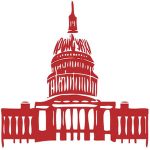Expanded Sick Leave Policies Lead to Fewer ED Visits
The United States is the only member country of the OECD (Organization for Economic Cooperation and Development) that does not have a national paid sick leave policy. The issue has been stalled at the federal level, with only unpaid leave guaranteed by the Family and Medical Leave Act passed in 1993. However, several states have experimented with different policies to help solve this issue. By 2019, 16 states and the District of Columbia developed statewide paid sick leave mandates. Without paid leave, many low-income and hourly workers are often forced to schedule medical care for themselves and their children during hours when they are not working or go without pay, leading to delayed care or inappropriate use of the emergency department.
With the heterogenous uptake of paid sick leave policies nationwide, a natural experiment developed. Ma et al, examined ED visits in states before and after adoption of statewide paid sick leave policies, compared to states that did not adopt such policies. The authors collected data from 2011-2019 using the Agency for Healthcare Research and Quality's State Emergency Department Database to collect data regarding ED visits on a state-wide level. After controlling for a variety of socioeconomic factors and accounting for Medicaid expansion, they found that there were 5.7 fewer ED visits per 1000 in population per quarter in states following implementation of leave policies compared to states without, a statistically significant decrease. Among states that implemented these policies, this represented a 5.6% decline in total ED visits compared to pre-implementation baseline. These results were seen for both adult and pediatric patients. Patients with Medicaid experienced a 9.9% relative decline in ED visits following implementation of paid sick leave. The authors estimate that if paid sick leave policies were implemented nationwide, the U.S. health care system would have saved $2.1 – $2.7 billion from reduced ED visits.
Emergency departments are the U.S. health care system's safety net. While EDs are equipped to treat a wide variety of ambulatory complaints, ED visits are an inefficient use of health care resources for outpatient complaints. An estimated $8.3 billion is spent each year on preventable ED visits.
Paid sick leave is a simple, albeit politically challenging, policy change that would result in substantial savings for the U.S. health care system and improve care for vulnerable patients by allowing for more consistent longitudinal care with a primary care physician.
ABSTRACT
Article: Ma Y, Johnston KJ, Yu H, Wharam JF, Wen H. State Mandatory Paid Sick Leave Associated With A Decline In Emergency Department Use In The US, 2011-19. Health Aff (Millwood). 2022 Aug;41(8):1169-1175.
Background: Paid sick leave provides workers with job-protected paid time off to address short-term illnesses or seek preventive care for themselves and their family members. We studied the impact of mandatory paid sick leave at the state level on emergency department (ED) visit rates, using all-payer, longitudinal ED data from the Healthcare Cost and Utilization Project for the period 2011–19.
Results: We found that state implementation of paid sick leave mandates was associated with a 5.6% reduction in the total ED visit rate relative to the baseline, equivalent to 23 fewer visits per 1,000 population per year. The reduction was concentrated in Medicaid patients. Some of the largest reductions were ED visits related to adult dental conditions, adult mental health or substance use disorders, and pediatric asthma. Mandatory paid sick leave may be an effective policy lever to reduce excess ED use and costs.
EMRA + PolicyRx Health Policy Journal Club: A collaboration between Policy Prescriptions and EMRA
 As emergency physicians, we care for all members of society, and as such have a unique vantage point on the state of health care. What we find frustrating in our EDs - such as inadequate social services, the dearth of primary care physicians, and the lack of mental health services - are universal problems. As EM residents and fellows, we learn the management of myocardial infarctions and traumas, and how to intubate, but we are not taught how health policy affects all aspects of our experience in the ED. Furthermore, given our unique position in the health care system, we have an incredible opportunity to advocate for our patients, for society, and for physicians. Yet, with so many competing interests vying for our conference education time, advocacy is often not included in the curricula. This is the gap this initiative aims to fill. Each month, you will see a review of a new health policy article and how it is applicable to emergency physicians.
As emergency physicians, we care for all members of society, and as such have a unique vantage point on the state of health care. What we find frustrating in our EDs - such as inadequate social services, the dearth of primary care physicians, and the lack of mental health services - are universal problems. As EM residents and fellows, we learn the management of myocardial infarctions and traumas, and how to intubate, but we are not taught how health policy affects all aspects of our experience in the ED. Furthermore, given our unique position in the health care system, we have an incredible opportunity to advocate for our patients, for society, and for physicians. Yet, with so many competing interests vying for our conference education time, advocacy is often not included in the curricula. This is the gap this initiative aims to fill. Each month, you will see a review of a new health policy article and how it is applicable to emergency physicians.



